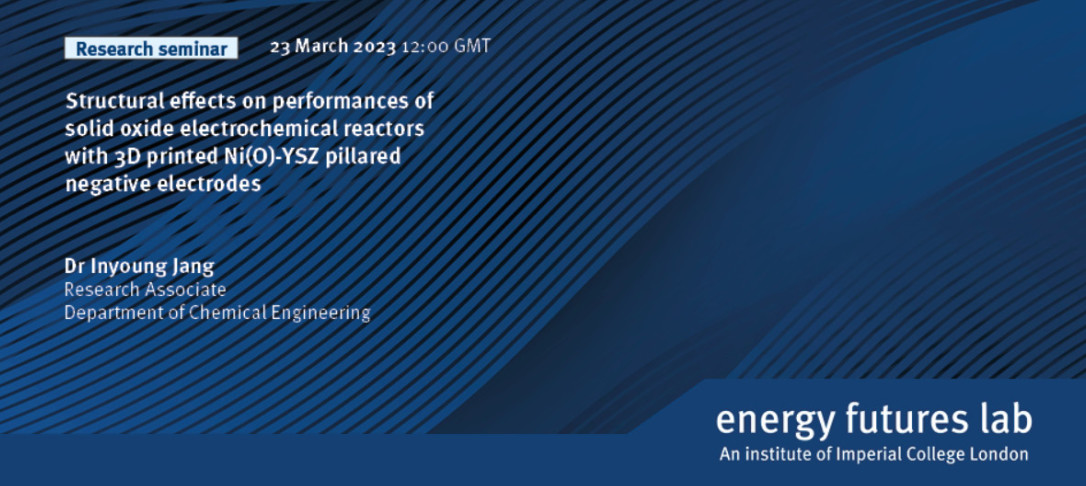
Structural effects on performances of solid oxide electrochemical reactors with 3D printed Ni(O)-YSZ pillared negative electrodes
As triple phase boundaries (TPBs: electrode | electrolyte | pore) are the main reaction sites for gaseous reactants such as H2O, CO2 or O2 in solid oxide electrochemical reactors (SOERs), increasing TPB densities increases performances of SOERs, which can operate as fuel cells or electrolysers, typically at 600 – 800C. Fabrication of 3D electrode functional layers is one means of achieving this, which we have demonstrated by inkjet 3D printing of pillared Ni(O)-YSZ negative electrodes of SOERs: H2O-H2 | Ni(O)-YSZ support | Ni(O)-YSZ pillars | YSZ | YSZ-LSM | O2, air. (YSZ: yttria-stabilised zirconia (((Y2O3)0.08(ZrO2)0.92), LSM: lanthanum strontium manganite (La0.8Sr0.2MnO3-)).
The effects of pillar height on SOER electrochemical performances have been predicted by computational simulation, to focus choices of geometries for subsequent 3D printing. We shall report results of experimental validation of the predictions by evaluating electrochemical performances of cells with increasing heights of NiO-YSZ pillars (pillar diameter of ~ 35 μm and height range of 10 – 120 μm), fabricated by 3D inkjet printing. Generally, increasing pillar height increased SOER peak power densities in fuel cell mode and (cross-sectional) current densities at the thermoneutral potential (1.285 V) in steam electrolysis mode. However, as expected, rates were predicted to be limited ultimately by mass transport through the porous pillar structure in which H2 (fuel cell) or H2O (electrolyser) reactant depletion occurred with increasing height.
Biography:
Dr Inyoung Jang is currently a research associate in Anna Hankin’s group. She joined Imperial college in February 2020 after receiving her Ph.D. in Energy Engineering at Hanyang University (Seoul) and her major research investigations were coating and synthesising materials for the energy conversion systems such as ceramic fuel cells and solid-state batteries. Currently, she’s working on 3D printing of microstructure ceramic layers for enhancing the performance of SOERs for generating clean energy, and steam or CO2 electrolysis.
About Energy Futures Lab
Energy Futures Lab is one of seven Global Institutes at Imperial College London. The institute was established to address global energy challenges by identifying and leading new opportunities to serve industry, government and society at large through high quality research, evidence and advocacy for positive change. The institute aims to promote energy innovation and advance systemic solutions for a sustainable energy future by bringing together the science, engineering and policy expertise at Imperial and fostering collaboration with a wide variety of external partners.